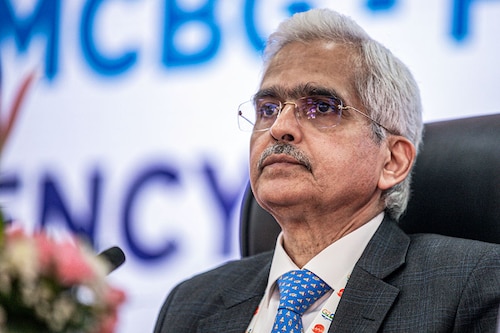Reserve Bank's Monetary Policy Committee likely to hold rates in August
The rate-setting panel is widely expected to keep the benchmark rate unchanged as it tackles the threat of a rising inflation due to the sudden spike in food prices


Te Reserve Bank’s rate-setting panel will begin its three-day meet on August 8. Most economists and analysts expect the Monetary Policy Committee (MPC) to hold the repo rate at 6.5 percent and continue to focus on withdrawal of accommodation as retail inflation is likely to breach the central bank’s upper threshold of 6 percent.
“Since the last RBI policy, inflationary pressures have increased. The sharp jump in vegetable prices have pushed expected inflation for the next two-three months above six percent. Cereal and pulse prices have also moved up. In this backdrop, the RBI should turn extra cautious at the upcoming MPC meeting," says Pankaj Pathak, fund manager- fixed income, Quantum AMC.
Pathak expects the RBI to remain on hold, maintain its policy stance as ‘withdrawal of accommodation’ and raise the CPI forecast by 20-30 basis points to 5.3-5.4 percent for FY24. “A hawkish pause is widely expected and is already a part of the market psyche. The bond market will take cues from the RBI’s assessment of the current spike in food prices and its impact on the overall inflation outlook and monetary policy," he adds.
According to Bloomberg, overnight-indexed swaps indicate a possible decline in domestic borrowing costs only in the second half of 2024. Mint Street has by-and-large ruled out a rate-cut in this calendar year because the sharp rise in food prices may keep inflation outside RBI’s comfort zone.
In April, the Monetary Policy Committee hit the pause button after lifting rates by 250 basis points from a historic low of 4 percent in FY23. In its previous three meetings, the central bank emphasized that the pause must not be interpreted as a pivot because it remains watchful of inflation:
“Uncertainties on the inflation outlook for H2 FY24 have not abated," RBI Governor Shaktikanta Das said as per the minutes of the June MPC meeting. “The spatial and temporal distribution of the south-west monsoon in the backdrop of a likely El Nino weather pattern needs to be watched carefully, especially for its impact on food prices. Adverse climate events have the potential to quickly change the direction of the inflation trajectory."
Moreover, most economists Forbes India interacted with expect the RBI to give weightage to the decline in core CPI despite the recent surge in food prices. They hope food prices will cool off in the coming months after concerns over deficient and uneven distribution of rainfall in June. Price of rice, milk, pulses, spices, and tomato are likely to remain sticky in the coming weeks.
The domestic core sector grew at 8.2 percent versus 13.1 percent on a y-o-y basis. The steel and cement sectors grew 21.9 percent and 9.4 percent respectively. Infra and roads continue to contribute to growth. The core sector contributes over 40 percent to the IIP. The performance of the core sector can help the IIP notch up to 5-6 percent this month. “Growth has been broad-based thus reflecting buoyancy in the infrastructure sector this year. With the exception of crude oil which declined marginally, growth was positive in the other 7 sectors," Madan Sabnavis, chief economist, Bank of Baroda said.
The signs of durable economic recovery in India give room to the central bank to hold rates and target inflation to bring it down to its target of 4 percent. But the RBI is cautious of the impact of global slowdown on exports. Globally, the US Federal Reserve and the European Central Bank hiked interest rates by 25 basis points recently.
First Published: Aug 07, 2023, 13:40
Subscribe Now